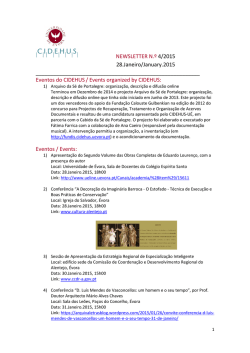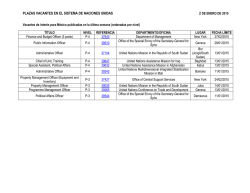
Senfft~Living with the Dead
Living with the Dead: Sharing the Truth and the Pain of the Past Alexandra Senfft—Author and Journalist It is a cold January morning, 2014, in Bratislava. My grandfather is buried here in the Slovak capital and I am on my way to his grave. An Irish film crew is with me—and Tomas Reichental. Tomi, born 1935 in the Slovak town Pieštany, survived Bergen-Belsen as a boy. His immediate family was rescued, but 35 other members of his family were murdered in the Holocaust. When I asked Tomi to accompany me to the graveyard, he looked at me in disbelief: “But not to show reverence to the very person responsible for the death of my family,” he said. I convinced him that my intention was not having him pay homage to my late grandfather, but to share an experience with him that both divides and unites us. The woman at the cemeteries department recognizes me instantly although I have visited the place only once before, together with a German-Slovak woman who survived Auschwitz as a toddler. The survivor and I had an intense exchange but eventually we fell into the trap, being enmeshed in the past, and our dialogue collapsed. She felt like a victim again and perceived me as the descendant of my Nazi-progenitor while I was not aware of any wrongdoing and considered her unfair. It was a sad and destructive outcome depicting the still existing walls between many of the offspring of both survivors and perpetrators. With this earlier failed encounter in mind, I am even more apprehensive and nervous. The cemetery administrator nods to me knowingly and leaves her office at once in order to lead us to the grave: VIP treatment—the envoy’s granddaughter! It is a shameful privilege I do not wish to have. Tomi feels even more uncomfortable than I as we walk through the cemetery. My grandfather’s unadorned grave looks forlorn. The inscription on the shabby wooden cross is merely an acronym, H.E.L., hiding the identity of the deceased: Hanns Elard Ludin, envoy to Slovakia for the Third Reich, convicted of war crimes and hanged from the gallows in 1947. In case my family wished to prevent the grave from being desecrated by keeping it unmarked, they might consider the fact that I am now exposing rather than protecting it as an act coming close to disgrace. I am very conscious of my move, which amounts to a final breach of loyalty with the “clan.” I stand up to it, because with Tomi I could share what wouldn’t be possible with my family: the truth. Up to this day some of my relatives cling to the belief that Hanns Ludin did not know that the Slovak Jews whose deportation orders he signed were sent to their certain deaths; they presume he dispatched them to labor camps having no idea about the extermination program—as if dispossessing and deporting people against their will wasn’t bad enough. My mother Erika-Nora was the eldest of the six Ludin children. She was 14 when the noose was put around her beloved father’s neck. Nobody explained to her why his “comrades” got away after the war without punishment, building lucrative careers. In the postwar era, my grandmother and her environment, like the rest of German society, kept silent and thus made my grandfather appear like a martyr—had he not handed himself over to the Americans, rejected opportunities of escape, and was he not executed by the Czechoslovaks who wanted to set an example and wreak vengeance on all Germans? Ludin is still seen as “a victim of his times,” an innocent Nazi, definitely not as a perpetrator. My mother and I grew up with “deafening silence” (Birgit Rommelspacher)—almost daily talk around the role of Ludin in which all too many words concealed the hideous facts. To speak with my mom about her father was a taboo also, since she dithered between denial and uncontrolled outbreaks of weeping. It tore her apart that her father, whom she loved so dearly, could have been a murderer at the same time. The trauma of losing him so brutally in her adolescence raged in her just as much as the violence emanating from his function and his deeds. To me, my grandfather was a desk criminal, and that attitude seems even more devious than committing the murderous criminal acts personally. How long did it take me to come to that conclusion? Until my mother died after decades of self-destruction that was really a creeping suicide, I was unconsciously part of the “conspiracy of silence” in my family. I had not been encouraged to ask critical questions and, if I did, I was confronted with emotions I could not handle. It was hard enough dealing with an unstable mother who sought to numb her painful feelings with alcohol. So I learned to avoid engagement with the bothersome past and thought about my grandfather no further. To me, he was a despicable Nazi, full stop; yet I didn’t consider what his position as envoy for the Third Reich meant in reality. He was to me a man out of a history textbook to whom I had no emotional ties, a total stranger, not least because I was born 14 years after his death. “The legacy of silence” (Dan Bar-On), the fact that among perpetrators there were “indescribable and undiscussable” (Idem) issues, had a major impact on our lives. I only discovered this years after my mother’s accident in her boiling bathtub, inebriated as she was, which finally killed her at the age of 64 and ended her suffering of post-traumatic stress disorder (PTSD). As I wrote her biography, focusing on the transgenerational process and on what had been transmitted down the line, I realized with shock that had my grandfather not been executed, I would have probably enjoyed having him around, sitting on his lap as a child, unaware of his full identity—as was the case with my grandmother, to whom I felt very close: my lovely Granny, the head of the cartel of silence. My hitherto blurred heritage unraveled layer by layer. I was slithering along the rim of an abyss filled with fear, shame, guilt, denial, and lies. I was confronted with a system of silence, silencing and repression that I had not been able to see before. Immense pity welled up in me as I remembered my poor mother, who had not been able to escape her own and her family’s prison. After finishing my book Silence Hurts, I realized I had shaped my own identity apart from the family diktat (decree), strengthened my viewpoint, and assumed my responsibility as the grandchild of my Nazi-grandparents and as a German citizen. My mother’s family had rejected me as a whistle-blower. I wasn’t really one of them anymore. Often asked by readers if I had “liberated myself from the past?” I answered: “No – there is no liberation from the past. But I integrated it into my being. I now know the monsters that before threatened me from their hiding, I am not afraid any more of a black box full of secrets I didn’t even know existed.” I don’t regret a minute of the painful process I underwent and undergo in order to come to terms with my mother’s and my family’s past. Now I am able to demand clarification from the society I live in, to be clear myself, and to use this to build on the future. My children should not grow up with the same betrayal as my mother and I did. They should know their past in order to become healthy, strong people, and good democrats, defending human rights. This, too, is why I stand here with Tomas Reichental at my grandfather’s grave which for each of us has such drastically different connotations because we come to it from opposing perspectives. Tomi and I manage to talk about it, while we stand there in the cold. The cameras are forgotten. Tomi speaks about his family and when he names the lost ones, we both cry. The dead become real and are remembered. My 19-year-old daughter Magda is observing the scene from behind the cameraman. History has become tangible for her too, here in the graveyard and during the ensuing trip. “Tomi, my grandfather is dead, but you are alive,” I say. Tomi agrees with a sense of relief as we hold on to each other, somewhat lost and yet not alone. We still have a long way to go in order to come to terms with a past that is haunting most of us up to this day. Sharing this experience with Tomi was the right thing to do. My daughter and the film team were with us and wrapped us in cotton wool, supporting us in our shared sorrow. We weren’t alone at all. Dan Bar-On once said to me: “Alexandra, you might lose some of your family over working through the past, but you will find others to fill their place.” “It couldn’t be more true,” I think gratefully, as Tomi and I leave the cemetery arm in arm, nestled by a cocoon. In the face of the rising populist, right-winged developments in Europe, I wonder though if all our efforts are too late. Alexandra Senfft is a publicist and author of several books. In 2008, Silence Hurts: A German Family History won the German national “Best Biography Award.” Senfft specializes in the transgenerational processes of the Second World War and the Holocaust, and in the Middle East. She writes for diverse German and international newspapers, magazines, and journals. The Irish film “Close to Evil” by Gerry Gregg featuring Tomas Reichental premiered in the spring of 2014. Alexandra may be contacted at www.alexandra-senfft.de or at [email protected]. q
© Copyright 2025

